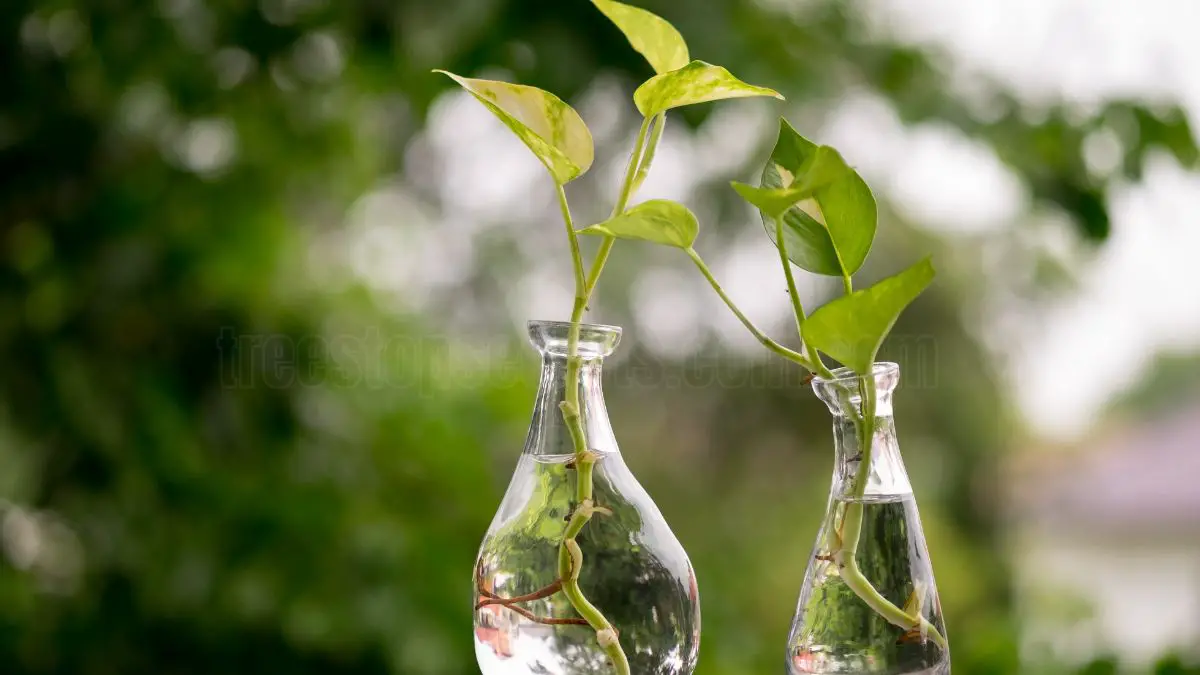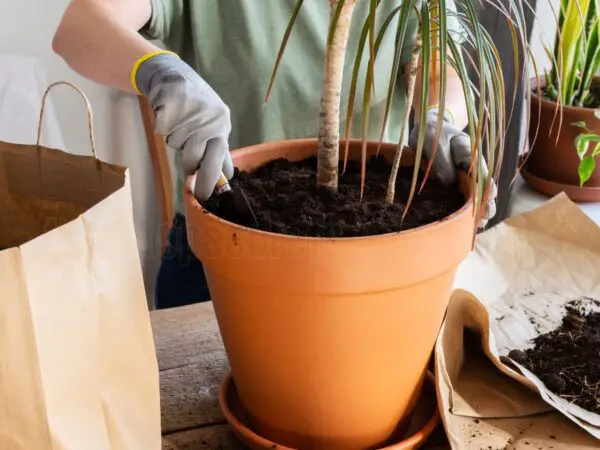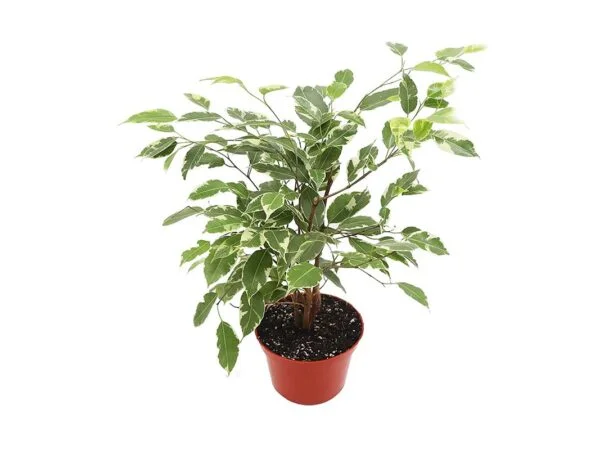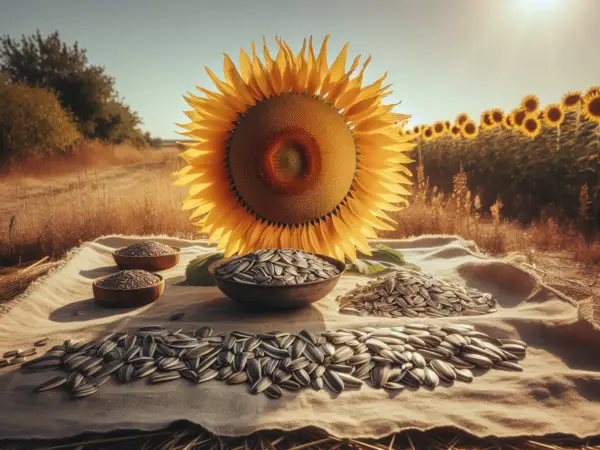Devil’s ivy care, or pothos care, is easy and rewarding, so follow these tips and enjoy this tough, lush beauty indoors. This tough little vine makes an excellent houseplant. Its ability to thrive in any lighting condition has made it a very popular plant used in residential homes in Marrakech.
Keeping it consistently watered, the soil drying out slightly in between watering sessions, will keep it happy and healthy. Keeping it out of direct, harsh sun will stop the leaves from burning while still getting it the bright light needed to thrive. Known for both its air-purifying properties and low-maintenance care, devil’s ivy is a plant that can liven up any space.
This guide will explore practical tips and essential care strategies to ensure your devil's ivy remains lush and beautiful for years to come.
Key Takeaways
- Devil’s ivy, also known as pothos, is a nearly indestructible houseplant that thrives in just about any indoor condition. Along with beautifying spaces, it cleans the air around them, making it an ideal inclusion to any home or office in Marrakech.
- To provide it with bright, indirect sunlight, put your devil’s ivy by east or west-facing windows. Just be sure to move it around as the seasons change so it can stretch and grow back comfortably.
- Only water devil’s ivy when the top inch of soil is dry to the touch. Avoid shocking the plant with cold water by using room temperature water, and watch for signs of overwatering or underwatering to avoid an unhealthy cycle.
- For best results, fertilize every 4-6 weeks during the growing season with a balanced, water-soluble fertilizer. To ensure you don’t hurt the roots, always dilute the nutrients and don’t over-fertilize.
- Keep the roots happy Use a porous, well-draining potting mix, and ensure your containers have drainage holes to avoid root rot. Test the soil frequently to maximize nutrient availability for strong, healthy growth.
- To propagate devil’s ivy, take stem cuttings or divide mature plants. When trying to root cuttings, keep them in a warm, humid environment to promote successful rooting and plant growth.
Understanding Devil's Ivy
Devil’s Ivy, or pothos, is one of the most popular houseplants in the world with their beautiful heart-shaped leaves and low-maintenance lifestyle. This tough little guy is adaptable to a multitude of indoor settings, which is why it’s one of the best plants for homes and offices.
More importantly, it leads to healthier environments — purifying indoor air and removing toxins, and providing a better quality of life.
What is Devil's Ivy?
Devil’s ivy (Epipremnum aureum) is a member of the Araceae family. Its trailing vines can grow astonishingly long, sometimes up to 6 feet!
Its native habitat in tropical forests only enhances its lush look, giving a vibrant pop to indoor spaces.
Benefits of Growing Devil's Ivy
Of all of these qualities, devil’s ivy shines brightest due to its air-cleaning capabilities. This property, combined with its agile growth rates, makes it a savvy investment for any space.
For people who live busy lives, its low maintenance needs are a gift. Hardy enough to withstand low light conditions, this houseplant can grow successfully in poorly lit rooms.
Its versatility makes it perfect for dynamic decorative applications as jungling down from hanging planters or training up on trellises.
Popular Varieties of Devil's Ivy
Common varieties of devil’s ivy include golden pothos, neon pothos, and satin pothos, all of which have different leaf coloration.
The variegated leaves, characterized by yellow or white markings, add charm to interiors and can be maintained in brighter light.
Devil’s ivy increases your space’s aesthetic beauty with its attractive foliage. You can propagate it quickly with stem cuttings, which makes it ideal for sharing with friends or growing your own plant collection.
Optimal Lighting for Devil's Ivy
Overall, setting an optimum lighting environment is fundamental for devil’s ivy, since it plays a central role in affecting the plant’s health and brightness. This tough little plant can adapt to low light settings, but the best lighting will yield fuller, more colorful leaves.
Natural light is key to developing healthier indoor ecosystems, giving devil’s ivy the opportunity to thrive.
1. Best Light Conditions for Growth
Devil’s ivy grows best in bright, indirect light. Too much direct sunlight will burn its leaves and create unsightly brown spots. To give your devil’s ivy the best exposure, try to keep it close to east or west-facing windows.
That way, it’ll absorb lots of light without being burned by direct sunlight. Testing the lighting conditions regularly will make sure your plant is getting enough light without the possible danger of burning the leaves.
2. Adapting to Different Light Levels
As seasons shift, you may need to move your plant around to accommodate different weather patterns and available sunlight. Though devil’s ivy will adjust to lower light, this will hinder growth and make leaf coloration less vibrant.
To encourage uniform growth, you may want to rotate the plant every now and then, providing all sides equal exposure to the light you have available.
3. Seasonal Lighting Adjustments
In winter, you’ll naturally have less light available, so maximizing their exposure is key. Grow lights are a great way to provide supplemental lighting during the months when daylight is shorter and less intense to keep ivy growing beautifully year-round!
Watching the plant react to different amounts of light as the seasons change will give you valuable information on what the plant requires.
Watering Practices for Healthy Growth
Watering practices that encourage vigorous, healthy growth Proper watering practices are key to devil’s ivy success. They contribute to root rot prevention and promote lush, healthy growth. By learning how your watering practices directly affect your plant’s health, you can help your indoor garden flourish.
By creating a regular watering routine tailored to each plant, they’ll flourish.
1. Frequency and Quality of Watering
Water pothos when the top inch of soil is dry to the touch. This allows the plant to get the moisture it requires but not be soaked. Room temperature water will prevent shocking the plant and allow the roots to absorb nutrients quicker.
Make sure to monitor the drainage holes to ensure that excess water is able to drain out, preventing the soil from getting waterlogged.
2. Signs of Overwatering and Underwatering
Signs of overwatering include yellowing leaves and mushy or “dark” roots. Signs of underwatering usually include wilting leaves and crispy leaf tips. Regularly checking soil moisture levels will help you find a healthy balance.
If you know that the plant has not been watered in the last 2 weeks, then give it a good soaking. If you see yellow or withered leaves, this is a sign of underwatering and can be corrected by watering gradually over several days.
3. Ideal Watering Techniques
A watering can with a narrow spout helps you target the soil directly, keeping moisture where your new plant needs it most. Water them well, until you see it run out the bottom of the pot.
To get the most accurate readings of soil moisture levels, it may be best to invest in a moisture meter. In ideal lighting conditions, watering every week or two is usually sufficient, adjusting as needed based on the plant’s response.
Fertilization Strategies for Nutrient Balance
Here’s everything you need to know about fertilizing devil’s ivy to help it grow strong and keep its leaves bright and beautiful. Without the right nutrients, even this prolific plant can find itself in trouble, with insufficient growth and unimpressive foliage.
Vigorous growth is critically important to producing sturdy stems and full, dark green foliage that holds up during production. They help your pothos plant continue to be an eye-catching addition to your home. Knowing its exact nutrient requirements is the key to getting the best possible results.
1. Types of Fertilizers to Use
Any balanced, water-soluble fertilizer formulated for houseplants will work well. This kind of fertilizer gives devil’s ivy all the nutrients it needs.
If you’re looking for an organic alternative, try using natural fertilizers such as compost tea or fish emulsion. These can do some serious magic and add nutrients to your soil without toxic chemicals.
Slow-release fertilizers provide a steady release of nutrients, which means your plant will have a consistent source of nourishment.
2. Timing and Frequency of Application
Applying fertilizers while plants are growing is essential. Try to apply fertilizer every 4-6 weeks while this is taking place.
As winter sets in and the plant goes dormant, cut back on fertilization or stop altogether. Remember, it’s best to follow package instructions for application rates so you don’t apply more than necessary.
3. Avoiding Fertilizer Burn
To avoid root damage through the exposure of concentrated nutrients, consider diluting the fertilizer before applying.
Watch your plant for indications of fertilizer burn, like the browning of leaf tips. If you see any of these signs, flushing the soil with copious amounts of water can help minimize any adverse effects of over-fertilization.
Soil Requirements for Optimal Growth
Choosing the ideal soil blend is essential for the golden pothos plant, also known as devil’s ivy, to flourish. The right care in soil quality directly affects drainage, aeration, and nutrient availability, which are crucial for the health of this popular houseplant.
1. Best Soil Types for Devil's Ivy
A good quality, well-draining potting mix is crucial, as it will hold moisture without being soggy. Adding in perlite or vermiculite will help drainage and aeration tremendously, making a nice home for those roots.
Peat-based potting mixes are ideal, since they retain moisture but still provide good drainage. This combination creates an optimal environment for devil’s ivy to thrive.
2. Soil Amendments for Enhanced Nutrient Uptake
Adding organic matter, such as compost, can help restore the soil, increasing its fertility. Using worm castings is a third great option, giving your plants a nutrient-dense lift that helps them thrive.
Test soil pH on a regular basis, maintaining it between 6.0 and 6.5 for optimal devil’s ivy growth. Work to establish a pH level between 6.0 and 7.0 to improve nutrient uptake.
3. Importance of Drainage
Pots with drainage holes are a must-have. They allow excess water to escape and keep plants from suffering from root rot. Effective drainage helps prevent moisture accumulation problems, leading to a stronger, more vigorous plant.
You can increase drainage by putting a layer of gravel or stones at the bottom of your pots. This does a good job of ensuring that roots stay dry and healthy!
Propagation Techniques for Expansion
The best part of propagating devil’s ivy is that you can start new plants to share with friends! It increases the diversity of your collection and fills your home with lush foliage. The process is straightforward, which adds to the charm of this endeavor for both experienced gardeners and those new to the practice.
Trying different propagation methods can help you discover your own preferences and get unexpected results, creating a more meaningful experience with the plants.
1. Effective Methods for Stem Cuttings
First, cut stems from vigorous plants, and make sure each cutting has a node, the vital zone for growing roots. Stick these cuttings directly in either water or wet soil. Water propagation gives you the opportunity to see roots develop, but soil propagation builds robust plants.
It is important to keep humidity high around the cuttings. A plastic bag or humidity dome will help ensure a moist environment, which greatly improves root growth.
2. Dividing Established Plants
For anyone with a more established devil’s ivy plant, dividing it can give you several new plants. Gently cut the root ball into pieces, ensuring that each piece has a good amount of stems and roots.
After dividing, place the newly divided plants into new soil to promote healthy growth. This technique helps to replenish your collection and rejuvenate the existing parent plant.
3. Tips for Successful Rooting
Just remember that patience is a virtue. Rooting can take anywhere from 3-8 weeks, depending on the conditions. A bright, warm spot will encourage quicker rooting.
Using a humidity dome or covering cuttings will trap the moisture, providing the ideal environment for cuttings to take root and flourish.
Common Pests and Diseases
Devil’s ivy, also known as golden pothos, is a tough houseplant, but it can still succumb to a number of pest and disease issues. Identifying these threats is the first step in protecting your plant and keeping it healthy. Frequent monitoring will allow you to address problems before they become major, ensuring your pothos collection remains vibrant and thriving.
1. Identifying Common Pests
Common pests that plague devil’s ivy are mealybugs, aphids, and spider mites. Mealybugs appear as white, cottony masses on stems and undersides of leaves. Aphids are tiny green or black sucking insects that cluster on young shoots.
Spider mites leave very thin webbing, most noticeably on the bottoms of leaves. Check for a sticky substance on foliage too, that can be a sign of pest infestation. A simple magnifying glass or jeweler’s loupe allows you to examine the undersides of leaves and the stems of smaller plants. That way you can easily identify those pesky intruders!
2. Recognizing Signs of Disease
Additionally, diseases such as root rot and leaf spot can be detrimental to plant health. Common symptoms are yellowing or spreading wilt, black necrotic spots on leaves, or discolored stems. Inadequate watering, and most notably overwatering, is a common cause of root rot, sometimes a plant’s worst enemy.
Look for any abrupt declines in plant vigor, as these may indicate that disease problems are developing below the soil line.
3. Organic Treatment Options
When it comes to pest control, choose a neem oil or insecticidal soap, both of which are effective and natural. Releasing beneficial insects such as ladybugs will keep bad bug populations at bay.
Proper hygiene, such as cleaning tools and pots, goes a long way in avoiding disease spread.
Prevention and Treatment Strategies
Keeping devil’s ivy, also known as the golden pothos, healthy involves being preventative and repetitious. These approaches have been proven to prevent pest infestations and disease, contributing to ideal growing conditions for this attractive houseplant.
1. Best Practices for Pest Prevention
It’s important to keep devil’s ivy clean. By regularly wiping the leaves with a damp cloth, you will remove any dust or other potential pests that may inhibit your peace lily’s ability to breathe.
When bringing in new plants, it’s a good idea to isolate them for a few weeks to monitor for any issues. By practicing this, you provide an opportunity to catch any potential pests before they have a chance to infest your current collection.
Rotate the plants often so each one has equal light exposure and air circulation. This very basic step goes a long way in preventing the formation of mold or mildew.
2. Natural Remedies for Common Issues
When pest problems arise, simple homemade insecticidal sprays can go a long way towards effective control. A very easy recipe that you can find online is combining soap and water, which can keep bad bugs away.
Diatomaceous earth acts as a natural barrier to crawlers. Sprinkling it around the base of the plant is an effective and eco-friendly way to keep these pests from infesting your plants.
Routine applications of organic treatments, such as neem oil, can go a long way in keeping your plants healthy and resilient.
3. Monitoring Plant Health
Inspecting leaves, stems, and soil regularly can help identify signs of stress or pests before they take hold and become a larger issue. Maintaining a plant care journal with notes on watering, fertilization, and plant health over time can be immensely helpful.
Continually tweaking care routines based on your observations will help ensure your plant thrives in its new environment.
Conclusion
With a little knowledge and attention, devil’s ivy care can be fun and fulfilling. Given the proper light, water, and soil this plant will flourish and add beautiful greenery to your environment. Watch for common pests and treat any problems promptly to keep your plant thriving. Leave a comment and tell other plant aficionados about your care advice. If you’re an experienced green thumb or a beginner, growing devil’s ivy will be a breeze and a wonderful addition to your horticultural practice. Its hardiness and attractiveness make it a great addition to any home. So, get a pot, get a nice cutting, and get started with this beautiful plant today. Your green thumb will be forever grateful to you!
Frequently Asked Questions
What is Devil's Ivy?
Devil’s Ivy, or Pothos, is a tough little houseplant known for its long, spindly vines and heart-shaped foliage. Caring for Devil’s Ivy is easy, and it thrives in almost any indoor environment. This versatility makes it a top option for home offices as well.
How much light does Devil's Ivy need?
Devil’s Ivy, also known as golden pothos, thrives in bright, indirect light and can tolerate low light levels. However, direct sunlight can burn its attractive leaves, so place it in a spot with bright light but no direct sun.
How often should I water Devil's Ivy?
Water your golden pothos when the top inch of ivy soil dries out, typically once every week or two. If your home is on the drier side, especially during winter months, you may need to water more frequently to maintain the right humidity and indoor temperature.
Do I need to fertilize Devil's Ivy?
To encourage healthy growth and lush foliage of your golden pothos plant, it should be fertilized with a balanced, water-soluble houseplant fertiliser.
What type of soil is best for Devil's Ivy?
For the best growth of your golden pothos plant, use a soil mixture that includes peat moss, perlite, and pine bark, ensuring excellent drainage and aeration for this popular houseplant.
How can I propagate Devil's Ivy?
You can easily propagate the golden pothos, also known as Devil’s Ivy, through stem cuttings. Clip a healthy vine about an inch below a node, then place it in soil or water to see roots form within a few weeks.
What pests affect Devil's Ivy?
The Devil’s Ivy, also known as the golden pothos, can attract pests like spider mites, mealybugs, and aphids. To ensure the health of your houseplant, regularly check for infestations and use insecticidal soap or neem oil as needed.
Image Source: Paid image from CANVA





